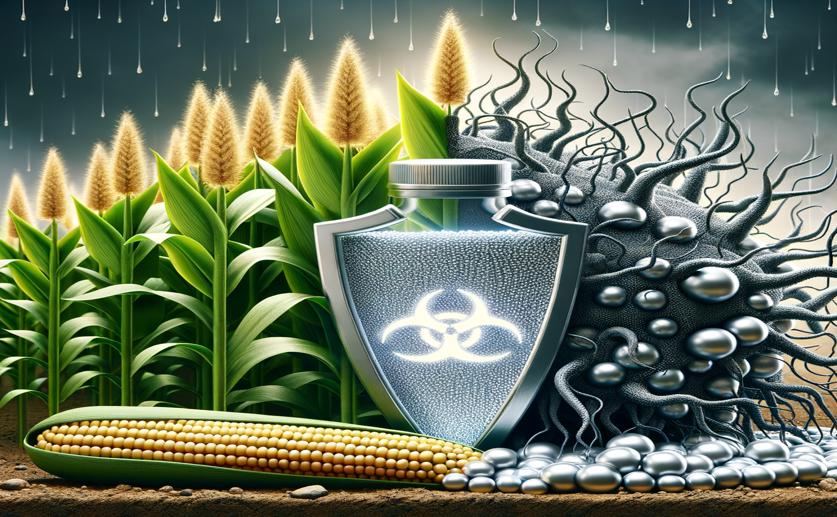
Fighting Crop Fungus with Eco-Friendly Nano-Silver
Greg Howard
20th March, 2024

Image Source: Natural Science News, 2024
Key Findings
- Researchers used citron juice to create silver nanoparticles (AgNPs) that fight crop fungi
- These AgNPs are stable, well-sized, and confirmed by various scientific analyses
- The AgNPs showed strong antifungal effects, especially against Aspergillus niger
AgricultureSustainabilityBiotech
References
Main Study
1) Exploring sustainable management by using green nano-silver to combat three post-harvest pathogenic fungi in crops.
Published 19th March, 2024
https://doi.org/10.1186/s11671-024-03986-x
Related Studies
2) Differential Antimicrobial Effect of Three-Sized Biogenic Silver Nanoparticles as Broad-Spectrum Antibacterial Agents against Plant Pathogens.
3) Biosynthesis and characterization of polysaccharide-capped silver nanoparticles from Acalypha indica L. and evaluation of their biological activities.
4) Novel Antibacterial, Cytotoxic and Catalytic Activities of Silver Nanoparticles Synthesized from Acidophilic Actinobacterial SL19 with Evidence for Protein as Coating Biomolecule.



 18th January, 2024 | Jim Crocker
18th January, 2024 | Jim Crocker